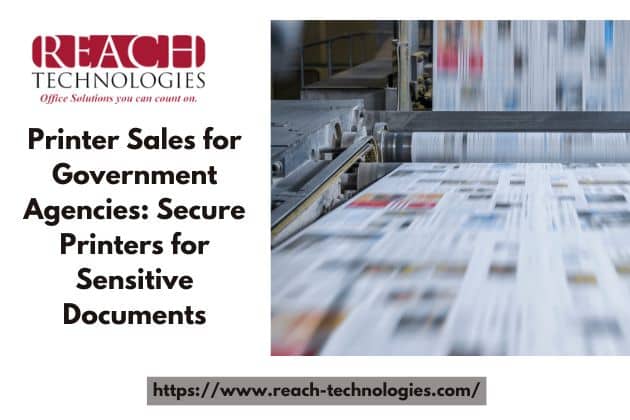
Government agencies handle a vast array of sensitive documents daily, ranging from classified information to personal records. As such, ensuring the security of these documents is paramount. One crucial aspect of maintaining document security is investing in secure printers designed to protect against unauthorized access and data breaches. In this article, we’ll explore the importance of secure printers for government agencies and highlight key considerations for printer sales in this sector.
Understanding the Importance of Secure Printers for Government Agencies
Protecting Sensitive Information
Government agencies deal with highly sensitive information that must be safeguarded at all costs. Secure printers equipped with advanced encryption, authentication, and data protection features help prevent unauthorized access to sensitive documents and mitigate the risk of data breaches.
Compliance with Regulatory Requirements
Government agencies are often subject to stringent regulatory requirements regarding data security and privacy. Secure printers that comply with industry standards and regulations, such as FIPS 140-2 and Common Criteria, enable agencies to meet compliance obligations and maintain the integrity of their operations.
Key Considerations for Printer Sales to Government Agencies
Advanced Security Features
When selling printers to government agencies, vendors should prioritize models with advanced security features, such as:
- Secure printing options, including PIN or smart card authentication, to ensure that documents are only printed by authorized users.
- Data encryption capabilities to protect sensitive information during transmission and storage.
- Secure document release mechanisms to prevent unauthorized access to printed documents.
Compatibility with Government Networks
Government agencies operate within secure network environments with strict access controls and protocols. Printers must be compatible with these networks and comply with government cybersecurity standards to ensure seamless integration and operation without compromising network security.
Robust Authentication and Authorization Mechanisms
Printers used by government agencies should employ robust authentication and authorization mechanisms to control access to device functions and features. Role-based access controls, biometric authentication, and audit trail capabilities enhance security and accountability in printing operations.
Top Tips to Implement Security Measures
Prioritize Security Features
When selecting printers for government agencies, prioritize models with advanced security features such as encrypted printing, secure document release, and robust authentication mechanisms. These features help protect sensitive documents from unauthorized access and data breaches.
Ensure Regulatory Compliance
Choose printers that comply with industry standards and regulatory requirements, such as FIPS 140-2 and Common Criteria. Ensuring compliance with these standards helps government agencies meet their legal obligations regarding data security and privacy.
Verify Network Compatibility
Verify that the printers are compatible with government networks and adhere to cybersecurity protocols. Compatibility with secure network environments is crucial for seamless integration and operation within government agencies’ IT infrastructure.
Offer Training and Support
Provide comprehensive training and ongoing support to government agency staff on the proper use and maintenance of secure printers. Educating users about security best practices and troubleshooting procedures helps maximize the effectiveness of the printers and minimize security risks.
Implement Secure Printing Policies
Establish clear printing policies and guidelines for government agency personnel, emphasizing the importance of secure printing practices. Encourage the use of features like PIN or smart card authentication and promote responsible document handling to mitigate the risk of security incidents.
By following these tips, government agencies can ensure they invest in secure printers that effectively safeguard sensitive documents and uphold data security standards.
Conclusion
In conclusion, secure printers play a critical role in protecting sensitive documents and ensuring compliance with regulatory requirements for government agencies. By investing in printers with advanced security features, compatibility with government networks, and robust authentication mechanisms, agencies can safeguard their data and maintain the confidentiality and integrity of their operations.
